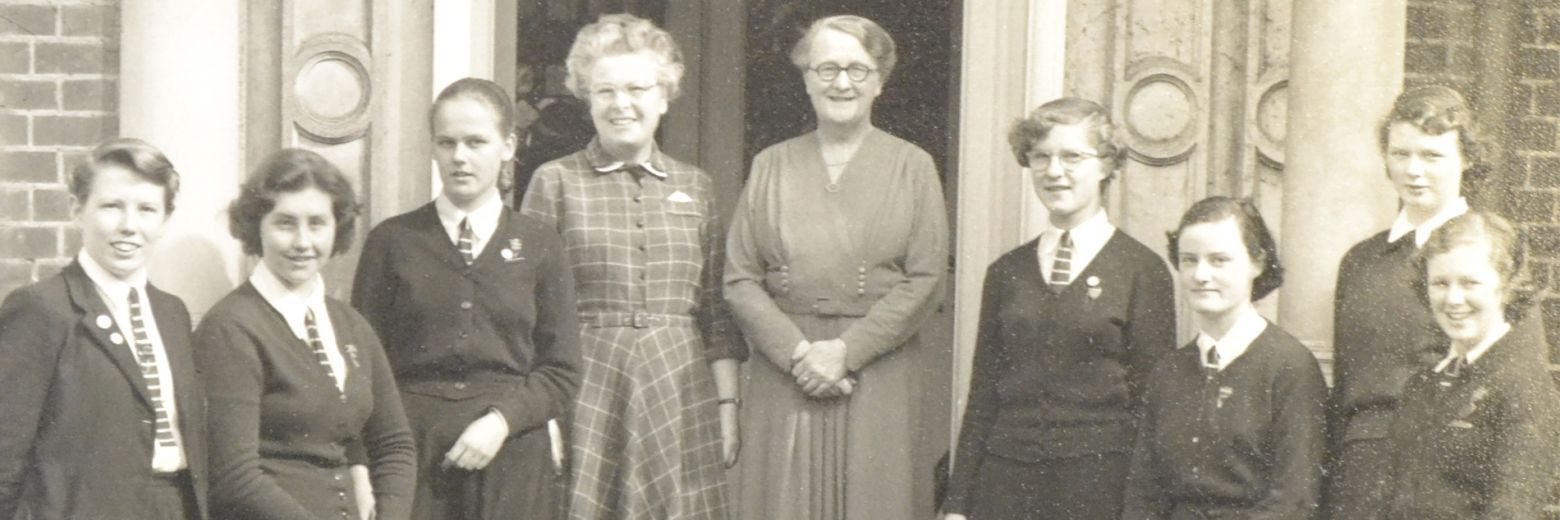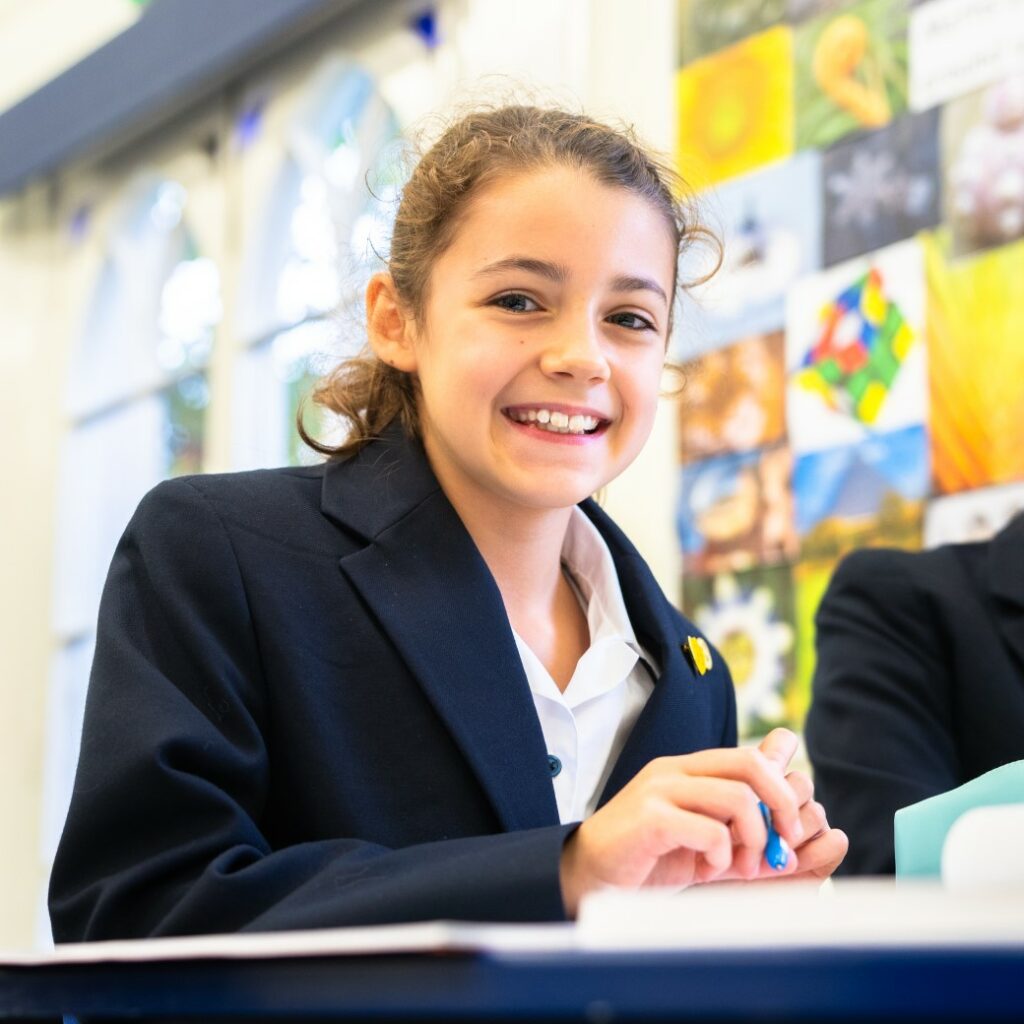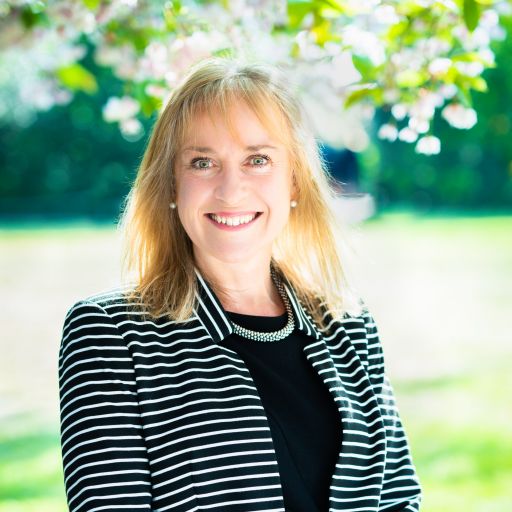Our History
Post-War
Once the war was over, the number of girls attending the school grew again rapidly and extra space was needed. A nursery was established in a converted stable, the garage became an art room and the governors bought ‘Gostwycke’ in Cambridge Road, for the boarders.
In 1957, Miss Comrie retired after 23 years as Principal. She had maintained the high standards set by the previous headmistresses, the Billson sisters. The news of her retirement caused great sadness within the school community and many people believe the school owes a deep debt of gratitude to her. Indeed, without her leadership and tenacity of purpose during World War II, the school would not be here today.
1950s and 1960s
Miss Evelyn Butterworth, already a teacher at St Mary’s, became Headmistress in 1957. The school curriculum was modified to focus on junior girls studying for the Common Entrance Examination. This gave the girls the opportunity to go on to boarding schools or to take the 11+ examination before entering local grammar schools.
But life at St Mary’s was not just about exams – as now, the girls still had plenty of fun. Miss Butterworth led the school’s Golden and Diamond Jubilees in 1958 and 1968. A pageant was presented by all 220 pupils based on the history of Colchester as seen through the eyes of the children.
By 1965, girls were enjoying swimming lessons at the garrison pool and the structure of the school was changing. St Mary’s ceased to take boarders in order to concentrate on the day students, and five years later the school became an educational trust with a dedicated and active Board of Governors.
1970s and 1980s
Sadly, in 1973 Miss Butterworth died and Miss Margaret Wake took over the role of Headmistress. She ensured that the development plans for the school continued. New kitchens, classrooms, a large dining room and a heated swimming pool were all added to the school at this time.
Due to overwhelming demand from parents who wished their daughters to be taught at an independent school, a senior school was opened in 1973, thus enabling the girls to study to GCE O-Level standard. In 1977 the school’s first O-Level results were encouraging, with the majority of girls achieving A and B grades.
Also in 1973, to allow for expansion of the school, St Mary’s purchased The Turrets, a Grade II-listed Gothic curiosity originally built in 1817 for the infamous Colchester Town Clerk Francis Smythies (1779-1840). The plastered brick, two-storey building with a cellar, attics, Gothic painted windows and beautiful ornate plasterwork ceilings and castle-style doors provided excellent classroom accommodation. Please download the booklet and watch the video below to find out more about the history of The Turrets:
Take a look at the Turrets and learn about its history and how it forms part of St Mary’s Senior School
After eight years, Miss Wake retired and Mrs Mouser became Principal in September 1981. As numbers continued to grow, the school began to search for a suitable building for the infant and junior girls. Collier House in Stanway, formerly a Victorian rectory and Dr Barnardo’s home, fitted the bill perfectly and was purchased in 1982. With great care, the building was altered and ready for the infant classes to begin the autumn term in the new building.
Collier House officially changed its name to Comrie House in honour of former head, Miss Phyllis Comrie. At the age of 90, she was among the guests of honour at the ceremonial opening of the junior department. Miss Comrie kindly purchased a minibus for the school, which proved invaluable for the domestic staff who ferried lunches between both schools. Gradually, the kitchen provision was extended, enabling the Lower School to become self-sufficient.
Mrs Elliott was appointed Lower School Head and spent the next two years driving between the two sites. The very first junior year started the school in 1983, followed by the next two year groups as more classes were added. The newly acquired space at Lexden Road enabled the number of available subjects to be increased.
1990 – Present
In the mid-1990s the Studio Block at Comrie House was built and later converted to provide a state-of-the-art drama and dance studio with professional floor and full-height mirror walls, as well as an artroom, music room and after-school care room.
During the 1990s, St Mary’s maintained the wide range of subjects on offer to girls, who achieved high standards in public examinations. In 2001 a contemporary designed Arts Block was constructed at the Senior School to provide a Drama Studio, Art Room, Music Room and three ICT suites.
In September 2006, Mrs Mouser retired after 25 years as School Principal and was succeeded by Vice Principal, Mrs Hilary Vipond.
St Mary’s Kindergarten was built in January 2011, a wooden structure purpose-designed, with its own outdoor learning and play space linking with the school’s Preparatory classroom, to create an Early Years Foundation Stage area. A ‘Forest School’ outdoor classroom was also built to provide a learning space surrounded by nature.
After 25 years at the school, Mrs Hilary Vipond retired and Mrs Nicola Griffiths took over as Principal in September 2021.
Now a member of the Girls Schools Association, the Independent Schools Association and the Independent Association of Preparatory Schools, St Mary’s continues to thrive, and has become recognised locally and regionally as a high-achieving independent school which has stayed true to its original, core values.



